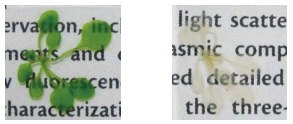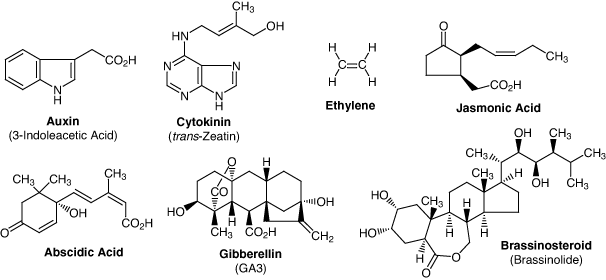Maintenance Notice (8:45 AM - 1:00 PM February 22, 2025): This website is scheduled to be unavailable due to maintenance. We appreciate your patience and understanding.
Published TCIMAIL newest issue No.197 | New tool "TCI SpectraViewer" | [Product Highlights] Chemiluminescent Reagents for... | Product Document Searching Made Easy by 2D Code!
Maximum quantity allowed is 999

In the field of plant science, various studies such as the physiological actions, morphogenesis, and cultivation techniques of plants have been investigating. We offer a wide range of products used in plant research, such as plants clearing reagents and plant hormones.
Plants Tissue-Clearing Reagent Suitable for Fluorescent Protein Observation: iTOMEI
Improved TOMEI (iTOMEI) is a method that specializes TOMEI 1) for fluorescent protein observation by Prof. Sakamoto et al. This method enables simple transparency and allows for clear detection of fluorescent proteins.2,3,4)
We offer suitable reagents for iTOMEI.

Figure 1. Optical sections images of leaf of Arabidopsis thaliana obtained using confocal microscope.

Figure 2. Cleared Arabidopsis thaliana by iTOMEI
(left) Non-treatment, (right) iTOMEI treatment
Products
Decoloring solution
Mounting solution
Advantages
- Enables transparency by simple osmosis in just a few days (more than 2 days).
- Keeps the fluorescence of a fluorescent protein such as GFP or tdTomato co-expressed as a reporter gene.
- Suppresses autofluorescence.
- Applicable to wide plant species including Oryza sativa, Arabidopsis thaliana, Marchantia polymorpha.
Example of use
| Preparation | [Reagents]
|
| Fixing | Fix the sample with 1% PFA/PBS for 1 hour at room temperature. *1 (Deaerate in fixative solution using vacuum pump or syringe when the sample is above ground part.) |
| Washing | Remove PBS and add the decoloring solution, then let it gently shake for 24 hours with shading at room temperature. *1 |
| Decoloring | Remove the fixation solution and add PBS, then let it rest for 5 minutes at room temperature. Repeat the same work twice. *1 |
| Washing | Remove the decoloring solution and add PBS, then let it rest for 5 minutes at room temperature. Repeat the same work twice more. |
| Staining | Remove PBS and add the staining solution, then let it rest with shading at room temperature. *2 |
| Washing | Remove the staining solution and add PBS, then let it rest for 5 minutes at room temperature. Repeat the same work twice. |
| Clearing | Remove PBS and add the mounting solution, then let it gently shake for 1 hour with shading at room temperature. *3 |
| Mounting | Mount the sample on a microscope slide with the mounting solution, seal by manicure and observe it. |
| *1 Operation time is determined by the sample size and plant type. *2 The treatment time of DAPI staining is for 30 minutes with 5 µg/mL and the treatment time of Calcofluor White staining is for 10 minutes with 1 g/L of Calcofluor White M3R and 0.5 g/L of Evans Blue, but their adjustments are needed for the purpose. *3 If you want to moderate the change in osmotic pressure, it is necessary to perform a gradual replacement with a low-concentration mounting solution. |
Video for how o use iTOMEI reagents
Plant tissue clearing protocol video for iTOMEI reagents
Rapid Transparency Reagent for Plants: TOMEI
TOMEI is clearing method suitable for observing only fluorescent staining dyes. It enables transparency in just a few hours (2 - 3 hours).
Product
- T3530
- Tissue-Clearing Reagent TOMEI [for Plants]
- *T3530 is unavailable except in Japan, U.S. and Europe.
Plant Growth Regulators
A typical example of plant growth regulator is a plant hormone. Plant hormones are the collective term for compounds produced in minute amounts by plants to regulate their own physiological functions. To date, seven natural plant hormones have been discovered: auxins, cytokinins, ethylene, jasmonates, abscisic acid, gibberillins and brassinosteroids (Figure 3).

Figure 3. Natural plant hormones
Auxins
Historically, auxins were first discovered as substances which showed phototropism. To date, it has been revealed that they play numerous roles such as initial development, budding, root growth development, growth of flower parts and cell division. Natural auxins are 3-indoleacetic acid, 3-indolebutyric acid and phenylacetic acid. Some unnatural synthetic compounds also exhibit the same activities.
- I0022
- IAA
- I0023
- K-IAA
- M2605
- IAA Methyl Ester
- E0878
- IAA Ethyl Ester
- I0024
- IAN
- I0026
- IBA
- I0032
- IPA
- N0005
- NAA
- N0007
- Na-NAA
- N0006
- K-NAA
- N0624
- 1-Naphthaleneacetamide
- N0045
- NOA
- B2746
- 4-BPA
- C0250
- 4-CPA
- C0940
- PCIB
- C0206
- MCPA
- E1149
- MCPB Ethyl Ester
- D0396
- 2,4-D
- D1319
- Na-2,4-D Monohydrate
- O0518
- 2,4-D Meptyl Ester
- T1509
- 2,4,5-T Potassium Salt
- T0451
- TIBA
- D1942
- Dichlorprop
- D4800
- Dicamba
- M3141
- cvxIAA
- A3390
- 5-Adamantyl-IAA
Cytokinins
Cytokinins are regarded as substances which stimulate cell division, shoot initiation and bud formation, when addition auxins are added. Typical structure features are adenine with an isopentenyl unit at N6 position, or with an isopentenyl unit with the methyl terminus being hydroxylated.
Abscisic Acids
Abscisic acid is occasionally classified as a sesquiterpene, however, it is biosynthesized from a carotenoid (C40) precursor. It stimulates the closure of stomata in the absence of water and induces seeds to synthesize storage proteins. It is also released when a plant experiences stress, as in lack of nutrition, pests, root distress, or disease.
Jasmonates
Jasmomates have a distinct fragrance and are biosynthesized from linolenic acid, an unsaturated fatty acid. They inhibit growth in adverse conditions, and stimulate tuber formation. They promote senescence of leaves, suppression of fruit growth, and the induction of tuber formation in potatoes.
Gibberellins
Ethylene (Precursor)
References
- 1) Three-Dimensional Imaging of Plant Organs Using a Simple and Rapid Transparency Technique
- 2) TRANSPARENCY METHOD OF BIOLOGICAL SAMPLE, AND BIOLOGICAL SAMPLE DECOLORIZER
- 3) Improved clearing method contributes to deep imaging of plant organs
- 4) Whole-Tissue Three-Dimensional Imaging of Rice at Single-Cell Resolution

